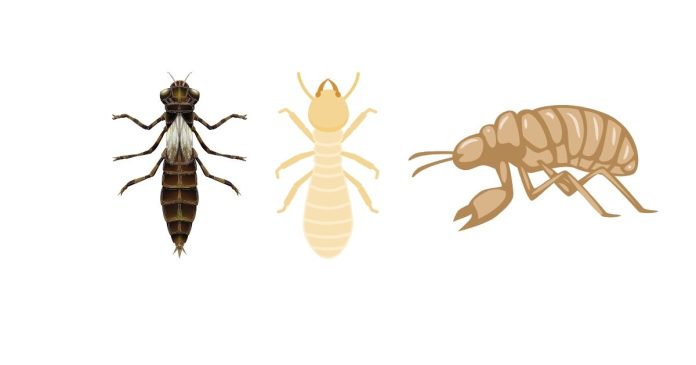In the world of entomology, there are many fascinating stages of an insect’s life cycle. One common stage that many insects go through is called the nymph stage. But what exactly are nymphs, and how do they differ from other stages, such as larvae or pupae? In this blog post, we will dive into the differences between nymphs and other life stages of insects, exploring what makes nymphs unique and how they contribute to an insect’s growth.
What is a Nymph?
A nymph is a life stage found in many insects that undergo incomplete metamorphosis, such as grasshoppers, cockroaches, and dragonflies. Unlike insects that go through complete metamorphosis (which includes the egg, larva, pupa, and adult stages), those that experience incomplete metamorphosis only have three stages: egg, nymph, and adult.
During the nymph stage, the insect looks like a smaller version of the adult but without fully developed wings or reproductive organs. Nymphs often continue to molt (shed their exoskeleton) several times as they grow, gradually becoming more like the adult version of the insect. The process of growing and molting continues until the nymph reaches adulthood, at which point it can reproduce.
Nymphs vs. Larvae: What’s the Difference?
One of the main comparisons to make when discussing nymphs is larvae, another developmental stage seen in insects that undergo complete metamorphosis, such as butterflies, beetles, and flies. Here’s how nymphs and larvae differ:
- Metamorphosis Process:
- Nymphs: Nymphs are part of insects that undergo incomplete metamorphosis. The transition from nymph to adult is gradual, with the insect gradually growing and changing.
- Larvae: Insects that go through complete metamorphosis, like butterflies or beetles, start life as larvae. Larvae are distinct from adults and often look nothing like the final adult form, usually having a worm-like appearance. They go through a pupal stage (where they transform into the adult), which is absent in incomplete metamorphosis.
- Physical Appearance:
- Nymphs: Nymphs resemble miniature adults, often with underdeveloped wings. They typically resemble the adult but are smaller in size and lack certain adult features.
- Larvae: Larvae usually have a completely different form from the adult, such as caterpillars, maggots, or grubs. They are often soft-bodied and may not have legs or wings.
- Diet and Behavior:
- Nymphs: Nymphs often behave similarly to adults and may begin feeding on the same food sources. For example, nymphs of grasshoppers eat plant material just like adult grasshoppers.
- Larvae: Larvae, on the other hand, may feed on different food sources than the adult form, often requiring a specific diet to grow, such as leaves for caterpillars or decaying organic matter for maggots.
Nymphs vs. Pupae: Key Differences
While nymphs undergo several molts to reach adulthood, insects that undergo complete metamorphosis also pass through a pupal stage. This is another key distinction between nymphs and other stages of insect development:
- Pupal Stage: Insects that undergo complete metamorphosis spend a significant amount of time in the pupal stage, during which they undergo dramatic changes inside a cocoon or chrysalis. The pupa does not feed and remains in a dormant, often immobile state until it finally emerges as an adult insect.
- Nymphs: Nymphs do not go through a pupal stage. They continuously molt as they grow until they reach maturity, meaning their transformation is more gradual and less dramatic than the metamorphosis of larvae to adult.
- Transformation: The pupa is the transitional stage between the larva and adult. It is during this stage that the insect transforms into its adult form, often undergoing significant internal changes. The nymph, on the other hand, doesn’t undergo this kind of internal transformation and grows into the adult form gradually.
Why Are Nymphs Important in the Insect Lifecycle?
Nymphs are essential for the growth and reproduction of many insect species. They represent a phase where the insect continues to develop into its adult form while already functioning within its ecological niche. Here are some reasons why nymphs are important:
- Feeding: Nymphs often begin feeding right away after hatching, allowing them to build up the energy and resources needed for their final molt into adulthood.
- Prevention of Overcrowding: The gradual development of nymphs helps prevent overcrowding in the insect world. Since nymphs typically molt several times before becoming adults, this gradual growth process ensures that they’re ready for adult life when it arrives.
- Ecosystem Balance: Nymphs serve as an important part of the food web, as many animals, including birds and other insects, prey on them. This helps maintain balance in the ecosystem and provides nourishment for other wildlife.
Nymphs Are Just One Stage in the Diverse World of Insects
In conclusion, nymphs are a vital stage of life for insects that undergo incomplete metamorphosis, and they differ greatly from larvae or pupae, which belong to insects with complete metamorphosis. Nymphs resemble miniature adults and grow gradually through multiple molts until they reach maturity. Understanding the role of nymphs in the insect lifecycle helps us appreciate the complexity and diversity of nature, and highlights how different species have evolved distinct strategies for growth and development.
So, next time you encounter a nymph, you’ll know that it’s not just a mini version of the adult, but a crucial stage in the insect’s journey toward adulthood!


